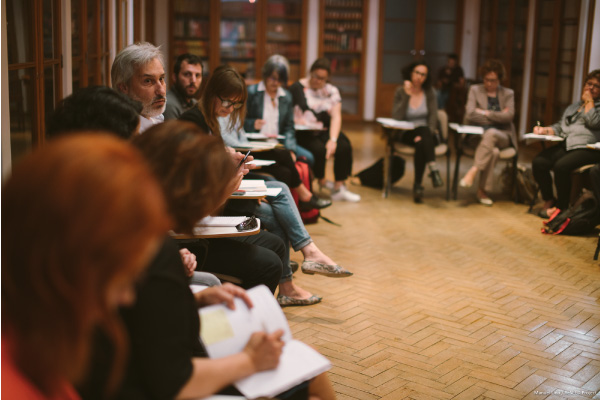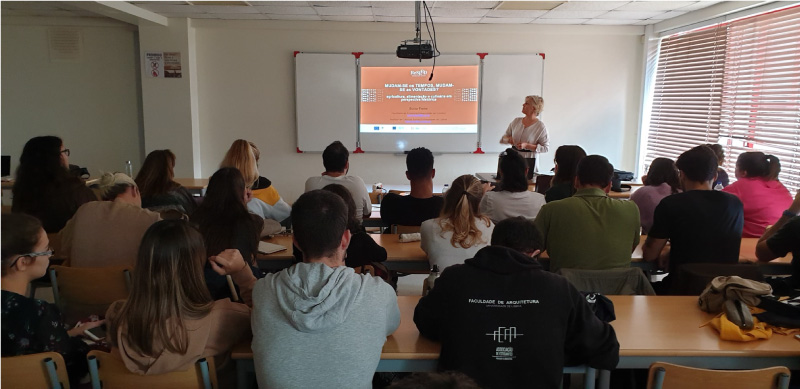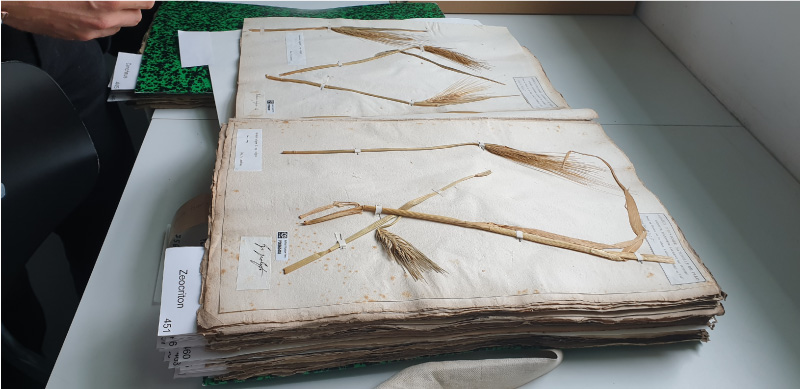
What we learnt in our first year “ReSEEDing”
One year of ReSEED Project! One year of a research journey in which the learnings and findings have strengthened the dimension of the challenge we have for the next four years. This project aims to examine the historical changes in agriculture related to cultivated seeds, environment and human action from 1750 to 1950, contributing to understanding the socio-economic and ecological impacts of the crops from the new worlds across Europe, with a special focus on the Iberian Peninsula. It seems obvious but an important decision was to really start from the beginning: what is, in fact, our object of study?
We have discussed concepts, updated the theoretical questions and analysed what is available in the literature within the ReSEED’s core team and with a transdisciplinary group of experts that include biologists, agronomists, archaeologists, historians. We realised that putting into practice a transdisciplinary project is all about learning by doing. As an exploratory project, ReSEED aims exactly at testing methodology and procedures, evaluating if and how they are useful for the research.
It is no coincidence that the first initiative of the project was to bring together these experts from disciplines that have barely talked to each other in the knowledge-building process. The ReSEED Workshop took place on May 23, 2019, at the National Museum of Natural History and Science, in Lisbon. One of the central discussions was: what is a seed variety? To what extent varieties are detailed in historical sources? A whole day for building bridges and raising more questions than answers, which was very positive.
Biology, History, Agronomy and Archeology experts in the first ReSEED Workshop on the May 23, 2019, at the National Museum of Natural History and Science in Lisbon.
Communicating
We are also concerned with clarifying ReSEED’s object of study for the society, for different audiences. Our communication actions focused on the general public through our social media, on students since elementary school to Ph.D. candidates by conferences, exhibitions, games, and also on institutions that are key for the project, working strategically to turn them into important partners.
Besides developing essential elements for scientific work, such as databases, we furthermore aim at creating tools to better communicate knowledge. One example of this first year is the design of a map showing the global circulation of the edible seeds. Data about the origin and the spread of these seeds is available but dispersed and not always scientifically correct. The map emerged from the perception that this information scattered needed to be systematized and visualised. This is a work in progress throughout the project in partnership with the Research Centre in Biodiversity and Genetic Resources (CiBio-InBio) from the University of Porto and the Research Centre for Architecture, Urbanism and Design (CIAUD) from the Faculty of Architecture, University of Lisbon.
We also started other collaborations in this first year, such as the one named “Changing times, changing wills?”. This question will guide the master´s students in Innovation in Culinary Arts from the Estoril Higher Institute for Tourism and Hotel Studies and the students of the degree in Design from the Faculty of Architecture, University of Lisbon. The first ones will reinterpret 17th and 18th-century cooking recipes to create innovative ones and the others will use the spaces from “Palácio dos Condes da Calheta”, built in Lisbon in the mid-17th century, as an inspiration to design new furniture related to food consumption.
“Changing times, changing wills?” The first meeting between the ReSEED Project and the master’s students in Innovation in Culinary Arts (Estoril Higher Institute for Tourism and Hotel Studies) and the students of the degree in Design from the Faculty of Architecture (University of Lisbon).
Crossing different types of information
We are in the process of building the corpus of historical sources. We started by exploring the printed ones that can be found in libraries, archives, botanic gardens, and the ones that are accessible online. Manuscripts are also part of our analysis.
We have been working on two different types of information. The most general data comes from administrative, tax-based documents which have been produced by the State and other organizations. It provides information on economic and social activities, but it is normally poorly detailed about farming activities at the local level. Thus we are cross-checking this with the information on cultivated plants produced by scientists and elite members since the 18th century and even before it: the work of botanists, naturalists and later the work of biologists, agronomists and also medical practitioners, pharmacists or cooks who have left records on food plants and the ways of making or consuming them.
The sources are written in different languages – even in dead ones such as Latin -, by different people at different times, with often contradictory information. Fortunately, there is a growing ease of access to sources online, but there is still a lot of information that is not online and not even catalogued, which is a huge challenge for our research. In these cases, the records are not only anonymous for historians but for everyone: it is a knowledge that is hidden, forgotten.
Specimen from the Herbarium of the French National Museum of Natural History. The work of the botanists and naturalists is essential for ReSEED’s research.
No trace, no bones
We can say that the most challenging aspect is the nature of our object of study. Cultivated plants are ephemeral. There are times when the seeds are the stars of agriculture and cooking. A few years or decades after, no one talks about them and they can be forgotten. The historical records they leave are fragile. When these products die, they leave no trace, there are no bones, metal, stone. The “no information” is also information. Our project is made by what we found, but also of what we did not find because it was not produced or it has been collected but has disappeared.
We are letting the historical sources “speak”. We deal with documents that have not yet been explored for some reason, but we also go back to the sources that have already been studied with a fresh look. We have many questions including our main one: Can past knowledge help find solutions to current challenges related to food security, agrobiodiversity and inequality?




0 Comments